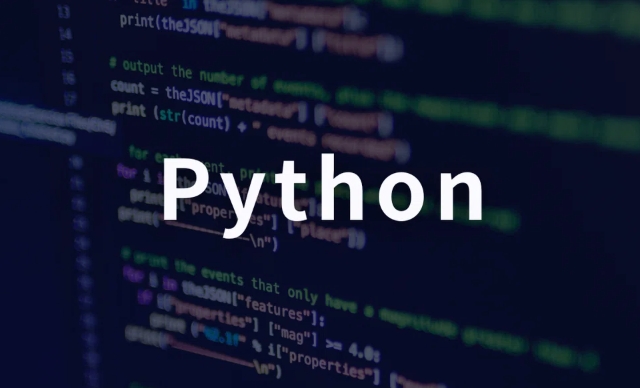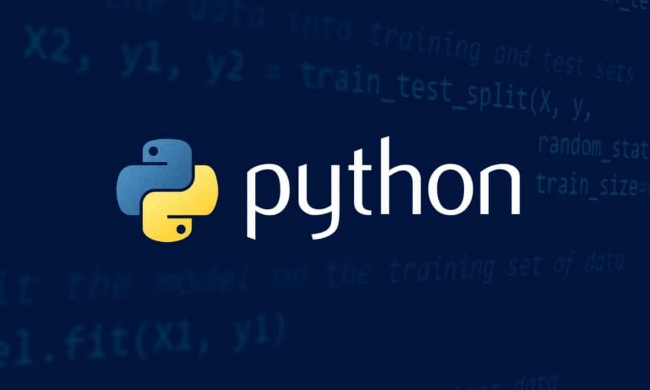Password hashing is used in Python to securely store user passwords. 1. Use libraries specially designed for passwords such as bcrypt or passlib for hashing, automatically add salt and support adaptive strength. 2. Avoid using fast hashing algorithms such as MD5 and SHA1, and do not splice manually or reuse salt values. 3. Store the complete hash string, including the algorithm identification and salt value. The field type is recommended to be VARCHAR(60) or above. 4. Do not encrypt the hash extra or set a unique index to ensure the security of password storage.

Password hash is used in Python to securely store user passwords, rather than directly saving plaintext. This step is very critical because once the database is leaked, the plain text password will directly expose the user's account risks. Therefore, do not store the password plaintext, but store the hash value .

There are some ready-made libraries in Python that can help us implement secure password hashing, such as bcrypt , passlib , and argon2 . Here are some common practices and suggestions.
Password hashing with bcrypt
bcrypt is a widely used password hash library. It uses salt by default and supports adaptive hash strength, which is suitable for long-term use.

Installation method:
pip install bcrypt
Example of usage:

import bcrypt
# Generate hash password = b"supersecretpassword"
hashed = bcrypt.hashpw(password, bcrypt.gensalt())
# Verify password if bcrypt.checkpw(password, hashed):
print("Password correct")
else:
print("Password Error")suggestion:
- The value generated by each hash is different because salt is added automatically.
- Do not manage salt values manually.
- The hash value can be stored directly in the database.
Use passlib to handle multiple hashing methods
passlib is a more general password hash library that supports a variety of algorithms, including bcrypt , sha256_crypt , argon2 , etc.
Install:
pip install passlib
Example (using bcrypt):
from passlib.hash import bcrypt
hashed = bcrypt.hash("my_password")
print(hashed)
if bcrypt.verify("my_password", hashed):
print("Verification Passed")advantage:
- Supports multiple algorithms.
- Easy to migrate or upgrade hashing policies.
- More configurable.
Common misunderstandings about password hashing
Many people are prone to make some mistakes when implementing password hashing, such as:
- ? Use fast hashing algorithms such as MD5 or SHA1: These algorithms are designed for fast calculations and are not suitable for password storage.
- ? Manual splicing of salt values: error-prone, and not every developer can implement it correctly.
- ? Reuse the same salt value: This reduces safety.
- ? No prefix is added when storing the original hash: it is impossible to tell which algorithm is used.
Correct way to do it:
- Use algorithms designed for passwords (such as bcrypt, argon2).
- Add salt automatically, don't deal with it yourself.
- Stores the complete hash string containing the algorithm identifier and salt value.
Hash storage suggestions
There are a few small details to note when storing a hash value in the database:
- The database storage field type is recommended to be
VARCHAR(60)or above, because the hash string length of bcrypt is usually 60. - Don't do extra encryption on hash values (unless there is an additional security layer requirement).
- The hash field should not be set to a unique index (because the hash of different users may accidentally be the same).
- Do not log in too many user login failures and lock the account (this may trigger a denial of service attack).
Password hashing is essentially the first line of defense for security. Python provides a good enough tool to achieve this. As long as you choose the right library and use the right method, there will basically be no major problems.
Basically that's it.
The above is the detailed content of Password Hashing in Python for Security. For more information, please follow other related articles on the PHP Chinese website!

Hot AI Tools

Undress AI Tool
Undress images for free

Undresser.AI Undress
AI-powered app for creating realistic nude photos

AI Clothes Remover
Online AI tool for removing clothes from photos.

Clothoff.io
AI clothes remover

Video Face Swap
Swap faces in any video effortlessly with our completely free AI face swap tool!

Hot Article

Hot Tools

Notepad++7.3.1
Easy-to-use and free code editor

SublimeText3 Chinese version
Chinese version, very easy to use

Zend Studio 13.0.1
Powerful PHP integrated development environment

Dreamweaver CS6
Visual web development tools

SublimeText3 Mac version
God-level code editing software (SublimeText3)
 PHP calls AI intelligent voice assistant PHP voice interaction system construction
Jul 25, 2025 pm 08:45 PM
PHP calls AI intelligent voice assistant PHP voice interaction system construction
Jul 25, 2025 pm 08:45 PM
User voice input is captured and sent to the PHP backend through the MediaRecorder API of the front-end JavaScript; 2. PHP saves the audio as a temporary file and calls STTAPI (such as Google or Baidu voice recognition) to convert it into text; 3. PHP sends the text to an AI service (such as OpenAIGPT) to obtain intelligent reply; 4. PHP then calls TTSAPI (such as Baidu or Google voice synthesis) to convert the reply to a voice file; 5. PHP streams the voice file back to the front-end to play, completing interaction. The entire process is dominated by PHP to ensure seamless connection between all links.
 How to use PHP combined with AI to achieve text error correction PHP syntax detection and optimization
Jul 25, 2025 pm 08:57 PM
How to use PHP combined with AI to achieve text error correction PHP syntax detection and optimization
Jul 25, 2025 pm 08:57 PM
To realize text error correction and syntax optimization with AI, you need to follow the following steps: 1. Select a suitable AI model or API, such as Baidu, Tencent API or open source NLP library; 2. Call the API through PHP's curl or Guzzle and process the return results; 3. Display error correction information in the application and allow users to choose whether to adopt it; 4. Use php-l and PHP_CodeSniffer for syntax detection and code optimization; 5. Continuously collect feedback and update the model or rules to improve the effect. When choosing AIAPI, focus on evaluating accuracy, response speed, price and support for PHP. Code optimization should follow PSR specifications, use cache reasonably, avoid circular queries, review code regularly, and use X
 How to develop AI intelligent form system with PHP PHP intelligent form design and analysis
Jul 25, 2025 pm 05:54 PM
How to develop AI intelligent form system with PHP PHP intelligent form design and analysis
Jul 25, 2025 pm 05:54 PM
When choosing a suitable PHP framework, you need to consider comprehensively according to project needs: Laravel is suitable for rapid development and provides EloquentORM and Blade template engines, which are convenient for database operation and dynamic form rendering; Symfony is more flexible and suitable for complex systems; CodeIgniter is lightweight and suitable for simple applications with high performance requirements. 2. To ensure the accuracy of AI models, we need to start with high-quality data training, reasonable selection of evaluation indicators (such as accuracy, recall, F1 value), regular performance evaluation and model tuning, and ensure code quality through unit testing and integration testing, while continuously monitoring the input data to prevent data drift. 3. Many measures are required to protect user privacy: encrypt and store sensitive data (such as AES
 python seaborn jointplot example
Jul 26, 2025 am 08:11 AM
python seaborn jointplot example
Jul 26, 2025 am 08:11 AM
Use Seaborn's jointplot to quickly visualize the relationship and distribution between two variables; 2. The basic scatter plot is implemented by sns.jointplot(data=tips,x="total_bill",y="tip",kind="scatter"), the center is a scatter plot, and the histogram is displayed on the upper and lower and right sides; 3. Add regression lines and density information to a kind="reg", and combine marginal_kws to set the edge plot style; 4. When the data volume is large, it is recommended to use "hex"
 PHP integrated AI emotional computing technology PHP user feedback intelligent analysis
Jul 25, 2025 pm 06:54 PM
PHP integrated AI emotional computing technology PHP user feedback intelligent analysis
Jul 25, 2025 pm 06:54 PM
To integrate AI sentiment computing technology into PHP applications, the core is to use cloud services AIAPI (such as Google, AWS, and Azure) for sentiment analysis, send text through HTTP requests and parse returned JSON results, and store emotional data into the database, thereby realizing automated processing and data insights of user feedback. The specific steps include: 1. Select a suitable AI sentiment analysis API, considering accuracy, cost, language support and integration complexity; 2. Use Guzzle or curl to send requests, store sentiment scores, labels, and intensity information; 3. Build a visual dashboard to support priority sorting, trend analysis, product iteration direction and user segmentation; 4. Respond to technical challenges, such as API call restrictions and numbers
 How to use PHP combined with AI to analyze video content PHP intelligent video tag generation
Jul 25, 2025 pm 06:15 PM
How to use PHP combined with AI to analyze video content PHP intelligent video tag generation
Jul 25, 2025 pm 06:15 PM
The core idea of PHP combining AI for video content analysis is to let PHP serve as the backend "glue", first upload video to cloud storage, and then call AI services (such as Google CloudVideoAI, etc.) for asynchronous analysis; 2. PHP parses the JSON results, extract people, objects, scenes, voice and other information to generate intelligent tags and store them in the database; 3. The advantage is to use PHP's mature web ecosystem to quickly integrate AI capabilities, which is suitable for projects with existing PHP systems to efficiently implement; 4. Common challenges include large file processing (directly transmitted to cloud storage with pre-signed URLs), asynchronous tasks (introducing message queues), cost control (on-demand analysis, budget monitoring) and result optimization (label standardization); 5. Smart tags significantly improve visual
 How to develop AI-based text summary with PHP Quick Refining Technology
Jul 25, 2025 pm 05:57 PM
How to develop AI-based text summary with PHP Quick Refining Technology
Jul 25, 2025 pm 05:57 PM
The core of PHP's development of AI text summary is to call external AI service APIs (such as OpenAI, HuggingFace) as a coordinator to realize text preprocessing, API requests, response analysis and result display; 2. The limitation is that the computing performance is weak and the AI ecosystem is weak. The response strategy is to leverage APIs, service decoupling and asynchronous processing; 3. Model selection needs to weigh summary quality, cost, delay, concurrency, data privacy, and abstract models such as GPT or BART/T5 are recommended; 4. Performance optimization includes cache, asynchronous queues, batch processing and nearby area selection. Error processing needs to cover current limit retry, network timeout, key security, input verification and logging to ensure the stable and efficient operation of the system.
 python list to string conversion example
Jul 26, 2025 am 08:00 AM
python list to string conversion example
Jul 26, 2025 am 08:00 AM
String lists can be merged with join() method, such as ''.join(words) to get "HelloworldfromPython"; 2. Number lists must be converted to strings with map(str, numbers) or [str(x)forxinnumbers] before joining; 3. Any type list can be directly converted to strings with brackets and quotes, suitable for debugging; 4. Custom formats can be implemented by generator expressions combined with join(), such as '|'.join(f"[{item}]"foriteminitems) output"[a]|[






